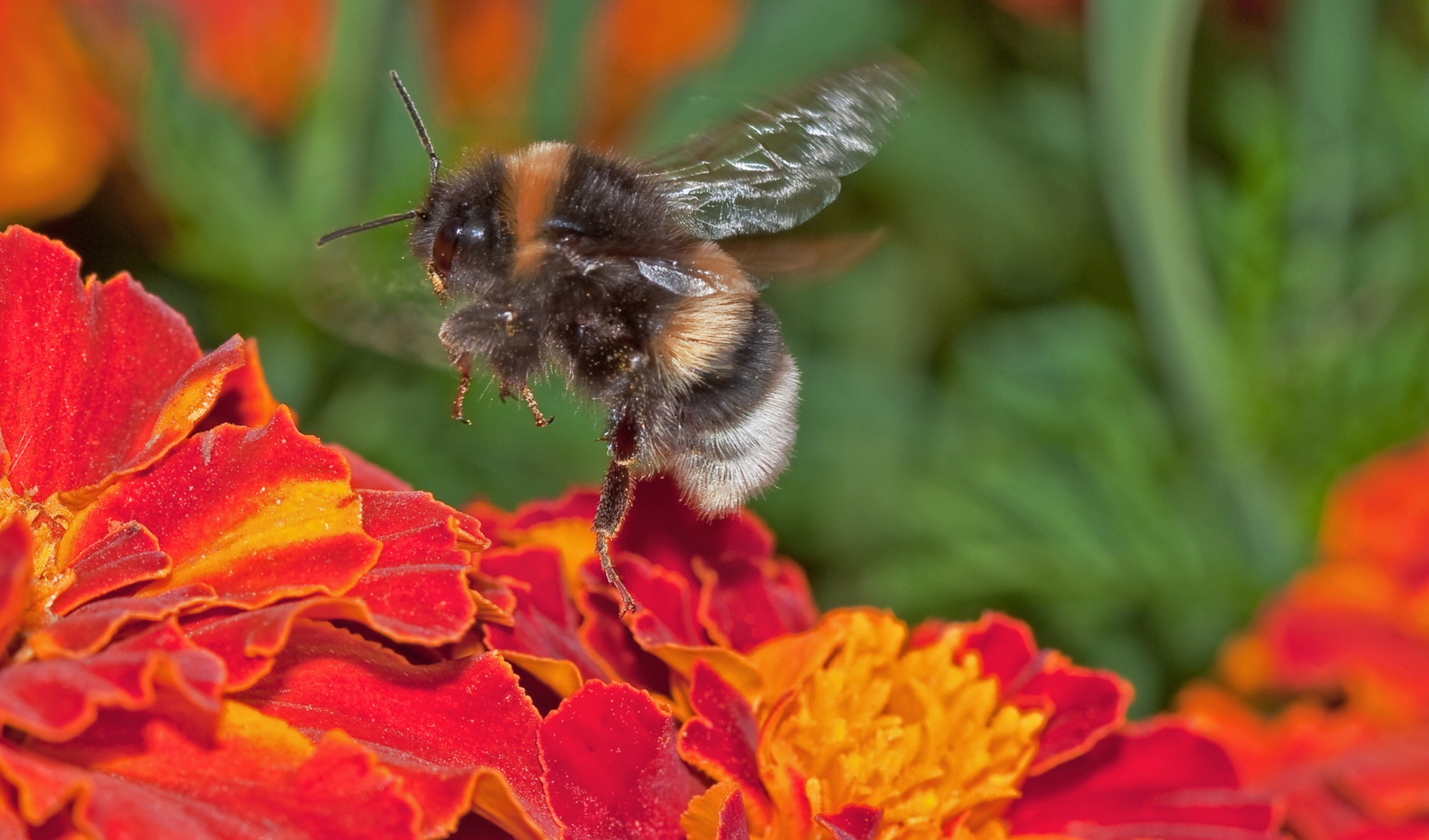

From weasels to monkeys to herons, smaller animals piggybacking or hitchhiking on other creatures is a pretty common way to get around. This helps the tiny critters conserve energy on long distances, but some insects could use electric fields to help them launch into action.
[Related: Toads on a python, and five other animals hitching rides on bigger animals.]
In a study published June 21 in the journal Current Biology, researchers found how microscopic and transparent Caenorhabditis elegans (C. elegans) worms can use electric fields to “jump” across Petri plates in the lab or onto some insects and other animals in nature. These electrical fields allow them to glide through the air and then attach themselves to pollinators who have an electrical charge. Bumblebees, in essence, are one of nature’s ultimate electric vehicles.
“Pollinators, such as insects and hummingbirds, are known to be electrically charged, and it is believed that pollen is attracted by the electric field formed by the pollinator and the plant,” co-author and Hiroshima University biophysicist Takuma Sugi said in a statement “However, it was not completely clear whether electric fields are utilized for interactions between different terrestrial animals.”
The team on this study began to investigate this electric transportation when they noticed that the worms they cultivated inside the lab were ending up on the lids of their Petri dishes, away from the agar they were placed on. Agar is a gelatin-like substance that microbiologists use to make growing areas for bacteria used to study microorganisms like C. elegans, which is a type of nematode.
The team attached a camera to observe the worms and found that the worms were leaping from the floor of the plate to its ceiling and not just climbing up the Petri dish walls. To investigate, they placed the worms on a glass electrode and noticed that they leaped to another electrode once a charge was applied. They jumped at roughly a human’s walking speed (.86 meters per second), which increased as the electric field intensified.
To better mimic a natural electric charge, the team then rubbed flower pollen on a bumblebee. Once the worms were close to their possible bee chauffeur, they stood on their tails and hopped aboard. Some of the worms even piled on top of each other and jumped in a single column, like ants working together to make a bridge. They could transfer 80 worms at once across the gap using this method.

“Worms stand on their tail to reduce the surface energy between their body and the substrate, thus making it easier for themselves to attach to other passing objects,” Sugi said. “In a column, one worm lifts multiple worms, and this worm takes off to transfer across the electric field while carrying all the column worms.”
[Related: A swarm of honeybees can have the same electrical charge as a storm cloud.]
C. elegans can attach to other bugs and snails for a ride, but since these animals don’t carry electric fields as well as pollinators, they have to make direct contact with the animal to jump on. These worms can also jump onto winged insects, but it was not clear how C. elegans could traverse across such long distances, considering their microscopic size. According to the study, winged insects naturally accumulate a charge as they fly, which produces the electric field that C. elegans can travel along.
The team is still not sure just how C. elegans performs this behavior, but it is possible that genetics may play a role. When observing worm species closely related to C. elegans, researchers noted that mutants who can’t sense eclectic fields tend to jump less than their normal counterparts. More research is needed to determine exactly what genes are behind making these jumps, and what other microorganisms can also use electricity to get around.